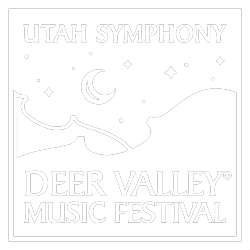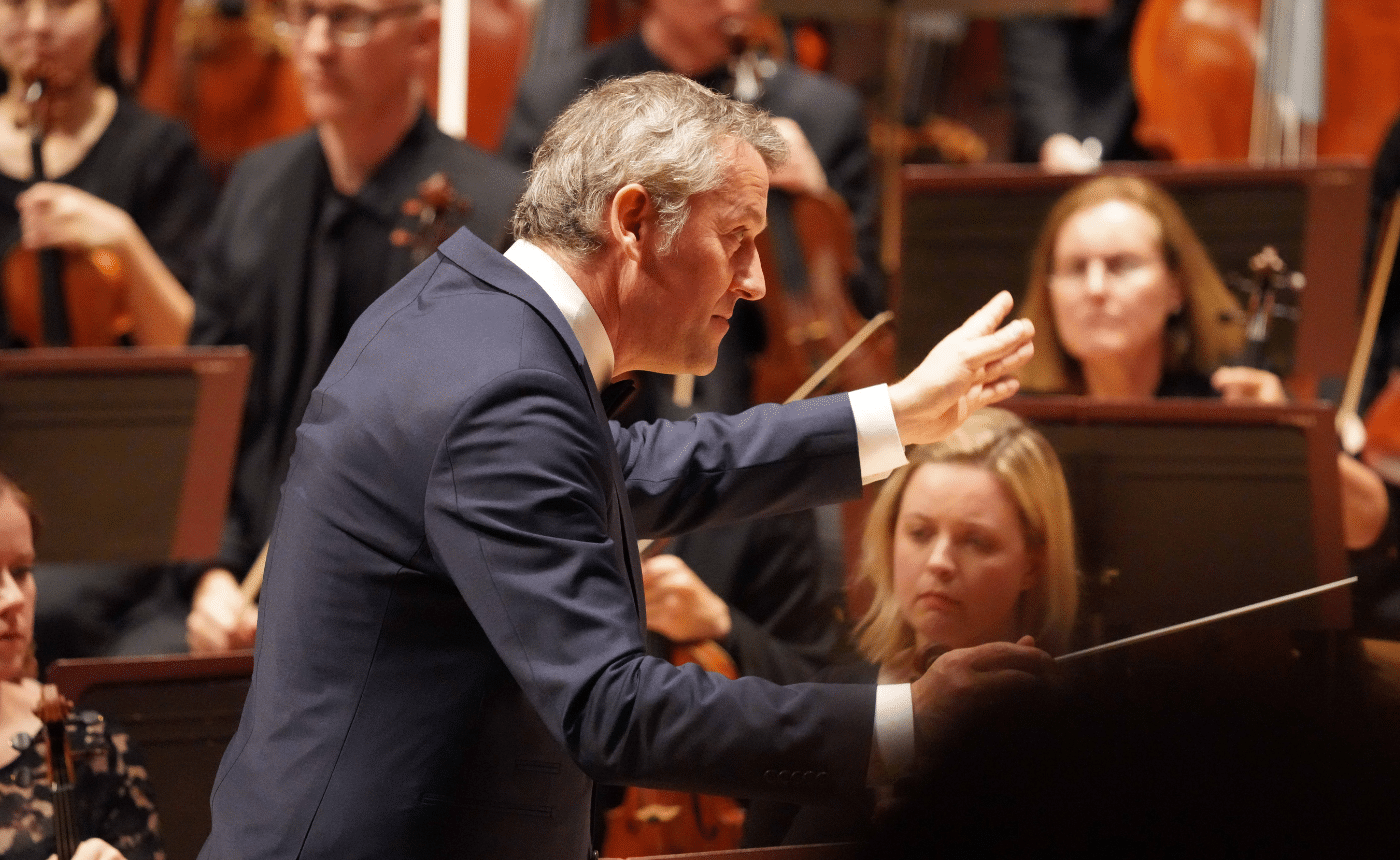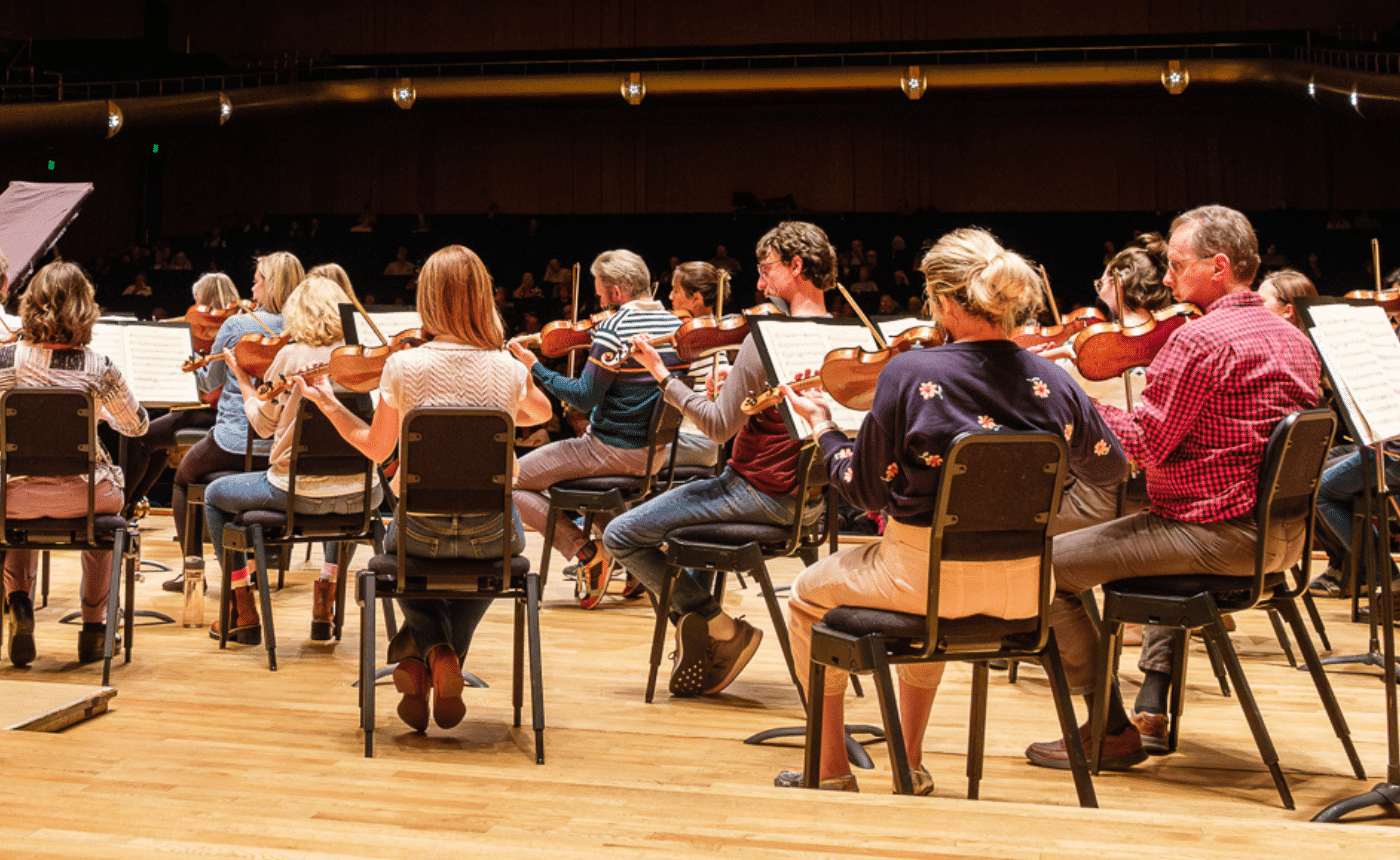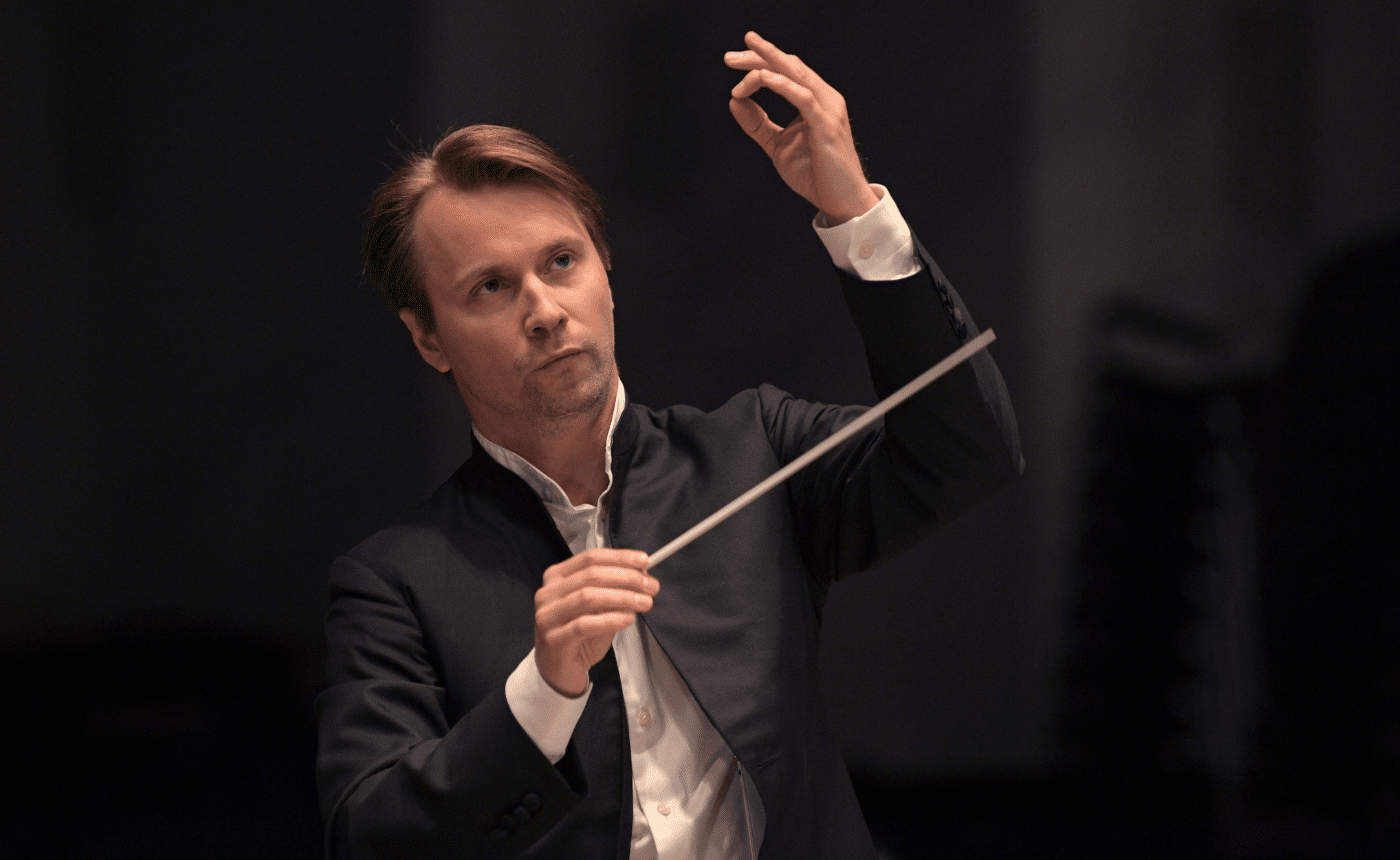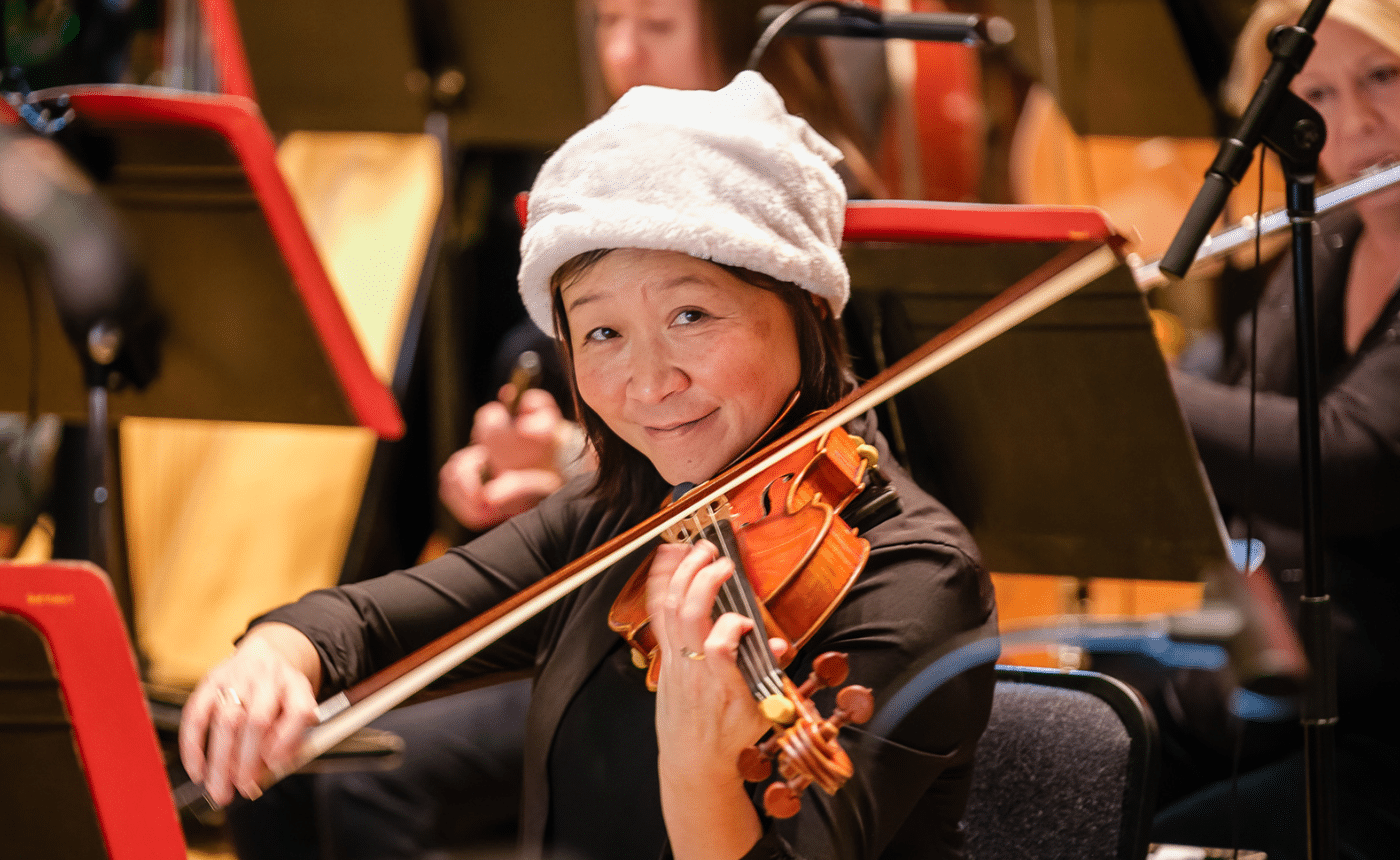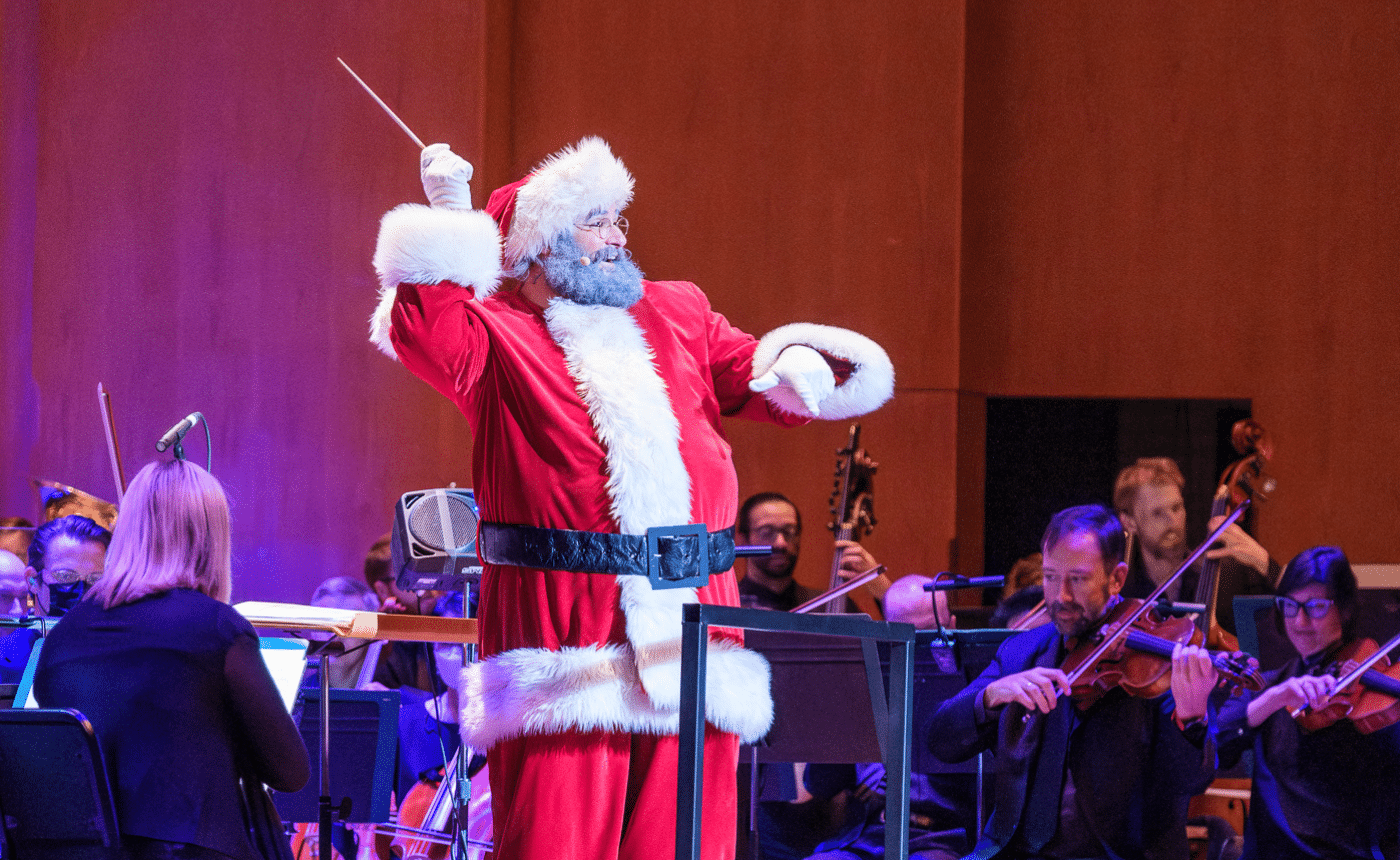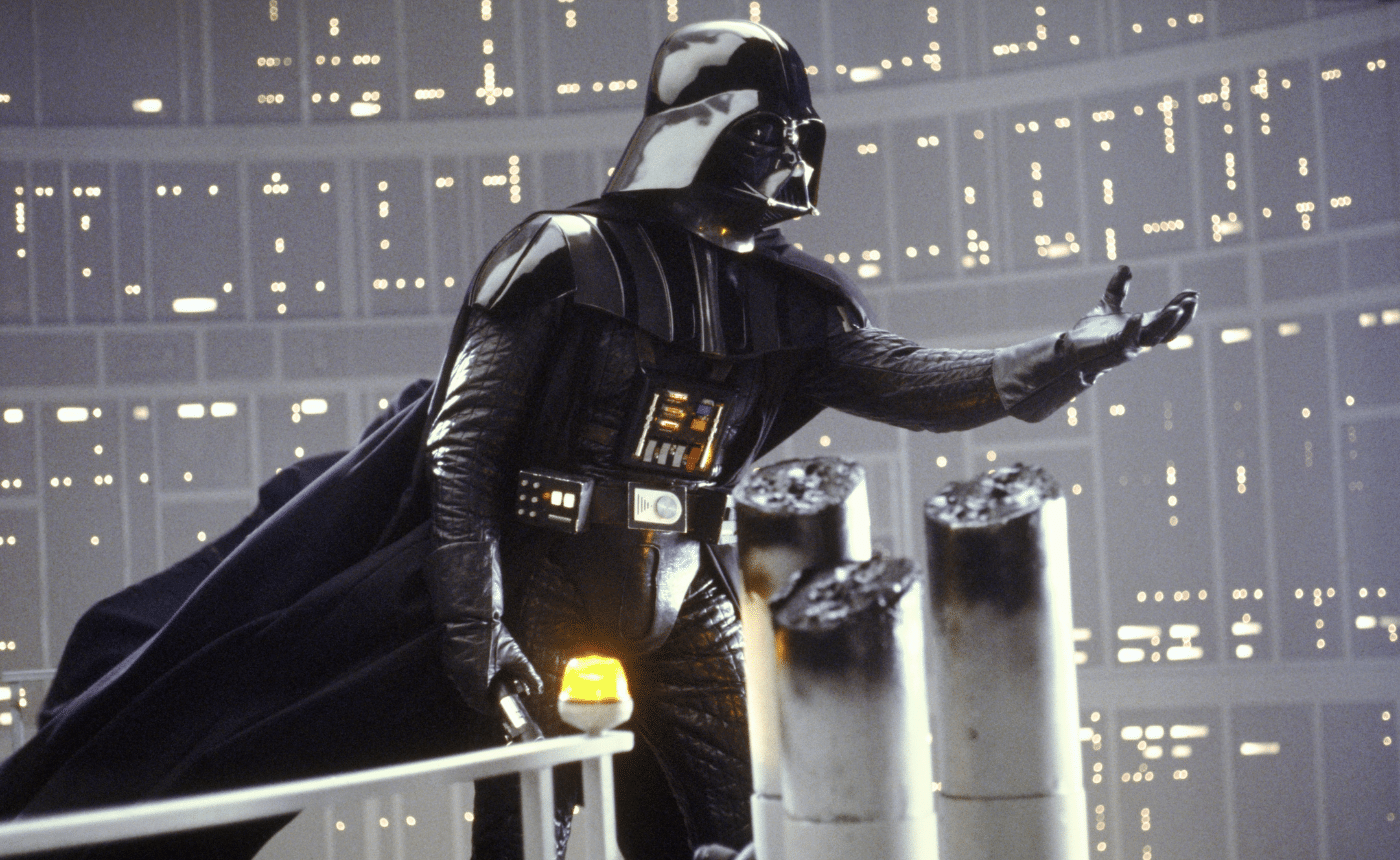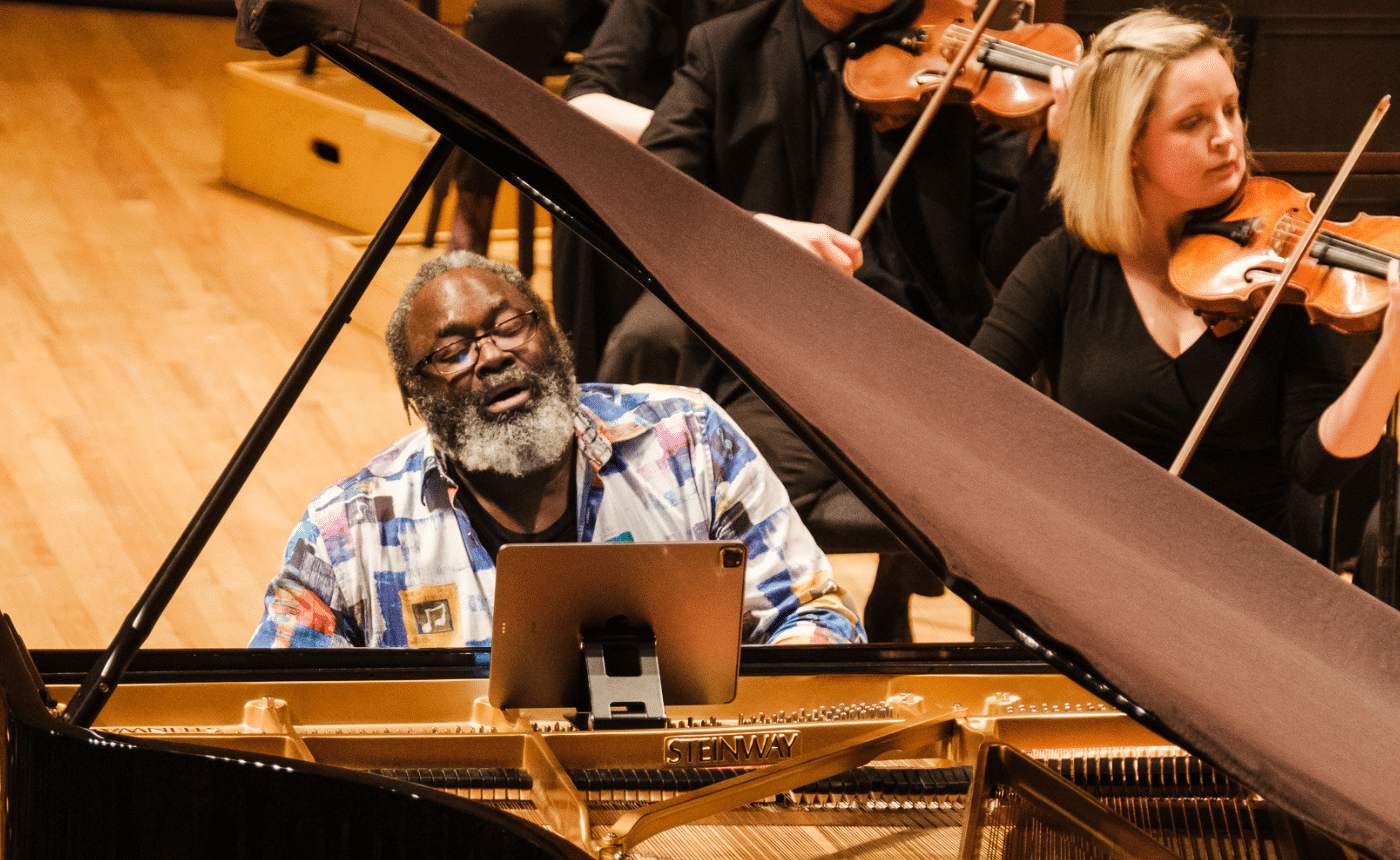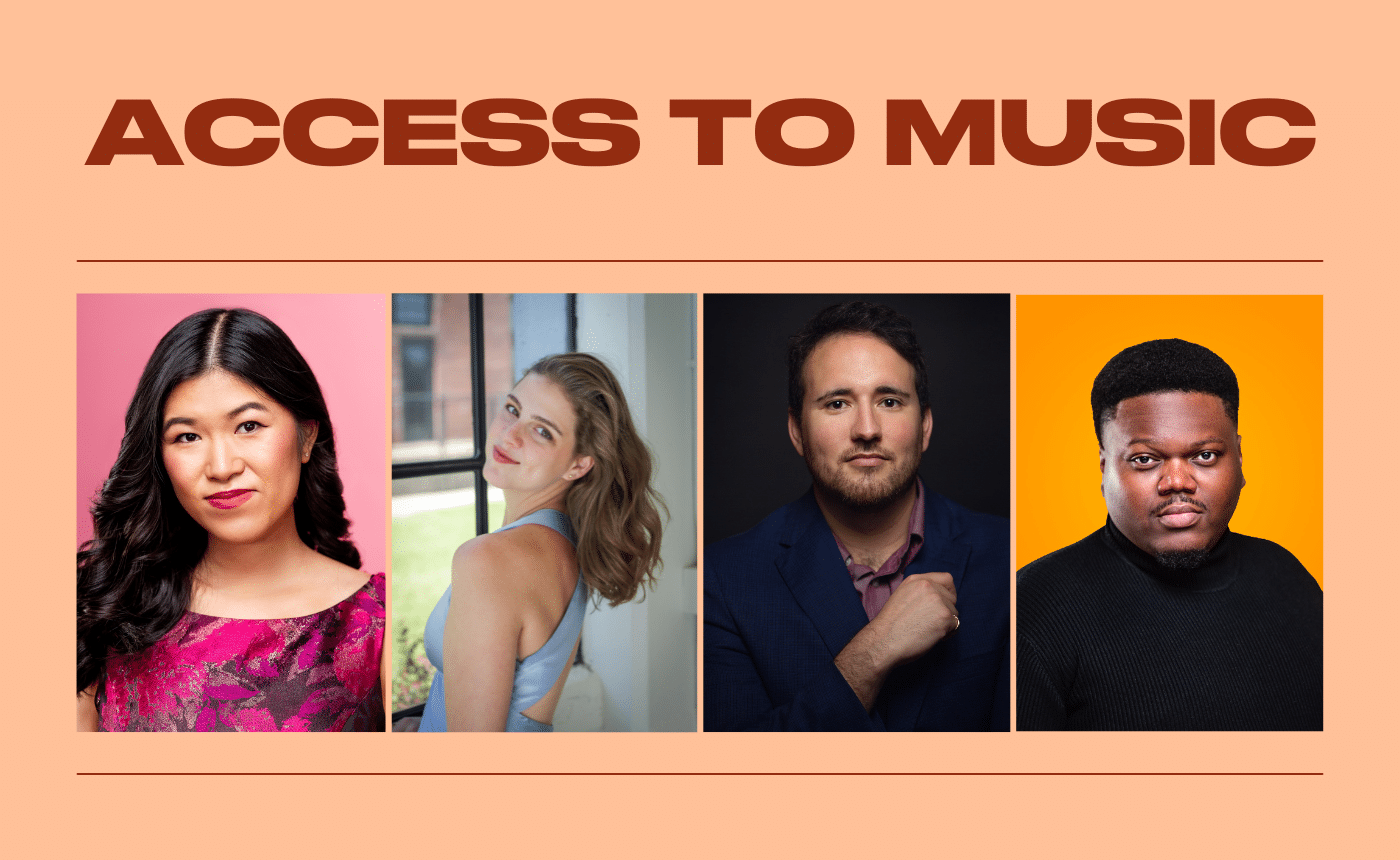Igniting Young Imaginations One Concert at a Time
by Megs Vincent
The lights dim, and the rustling of over two thousand eager fifth graders—their sneakers swinging above the concert hall floor—settles into an expectant hush. A single baton rises above the sea of instruments, and with one sweeping motion, the silence is shattered by a cascade of sound—bold brass fanfares, shimmering strings, the deep pulse of percussion. In that moment, young minds spark with possibility. This is not just a concert. For many, this is a first encounter with a symphony—an introduction to a world where music tells stories, evokes emotions, and opens doors to imagination.
For more than 40 years, Utah Symphony’s fifth grade concerts have served as an electrifying introduction to the power of live orchestral music. More than 16,000 students from 250 schools were in the audience this school year, hearing classical masterpieces and modern works come alive.
As one teacher shared, “Thank you so much for putting together this program. It was the first time almost all of my 33 students have been to a symphony!”
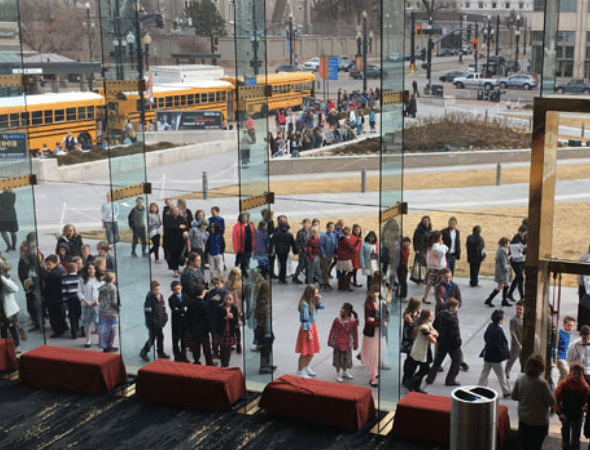
Another teacher echoed this sentiment, “Thank you for providing our students with an experience that most of them will never have outside of this performance. The music is always enjoyable and engaging.”
Each concert is carefully curated to transport students through soundscapes rich with adventure. Whether it’s the rushing wings of the phoenix in Stravinsky’s Firebird, the swirling chaos of Beethoven’s Symphony No. 6, or the wonder of Hisaishi’s Princess Mononoke and Howl’s Moving Castle, the program is designed to engage young ears and minds. Students not only hear music—they feel it.
One young listener marveled, “I liked how calm some of the music was and then it would get really loud!” Another shared their enthusiasm for specific instruments, “The French horns were my favorite.” Among the most popular pieces? “The most liked pieces from my class were Clair de Lune and The Firebird.”
But these concerts are more than just performances—they are conversations. Guided by a charismatic conductor, the students learn not only to hear but to listen. They discover how music can tell stories without words, how a simple shift from major to minor can change an entire mood, how composers weave emotion into sound. Teachers also receive pre-concert materials to help students explore musical concepts before they ever set foot in the concert hall, ensuring that when the downbeat falls, they are active listeners, ready to engage.
Beyond the music, there is something almost magical about the setting. Abravanel Hall itself—its golden chandeliers glittering like frozen raindrops, its pristine acoustics allowing even the softest flute solo to reach every corner—adds to the sense of occasion.
As one teacher remarked, “Congratulations for this concert. This is an incredible experience for our students. They have enjoyed being in Abravanel Hall, the concert, and the projections. The music has been amazing. Thank you!”
Long after the final note fades, the experience lingers—in the chatter of students filing back onto school buses, in the excited recounting of favorite moments to parents that evening, and in the newfound appreciation for the way music can shape emotion and imagination. And perhaps the most telling of all is the question heard over and over: “Can we go again?”



